Microsoft 70-741 Networking with Windows Server 2016 Online Training
Microsoft 70-741 Online Training
The questions for 70-741 were last updated at Dec 09,2025.
- Exam Code: 70-741
- Exam Name: Networking with Windows Server 2016
- Certification Provider: Microsoft
- Latest update: Dec 09,2025
You have a server named Server1 that runs Windows Server 2016 and is configured as a domain controller. You install the DNS Server server role on Server1. You plan to store a DNS zone in a custom Active Directory partition. You need to create a new Active Directory partition for the zone.
What should you use?
- A . Set-DnsServer
- B . Active Directory Sites and Services
- C . Dns.exe
- D . Dnscmd.exe
HOTSPOT
Your network contains an Active Directory domain named contoso.com. The domain contains two
servers named Server1 and Server2 that run Windows Server 2016. Server1 has Microsoft System Center 2016 Virtual Machine Manager (VMM) installed. Server2 has IP Address Management (IPAM) installed.
You create a domain user named User1. You need to integrate IPAM and VMM. VMM must use the account of User1 to manage IPAM. The
solution must use the principle of least privilege.
What should you do on each server? To answer, select the appropriate options in the answer area.
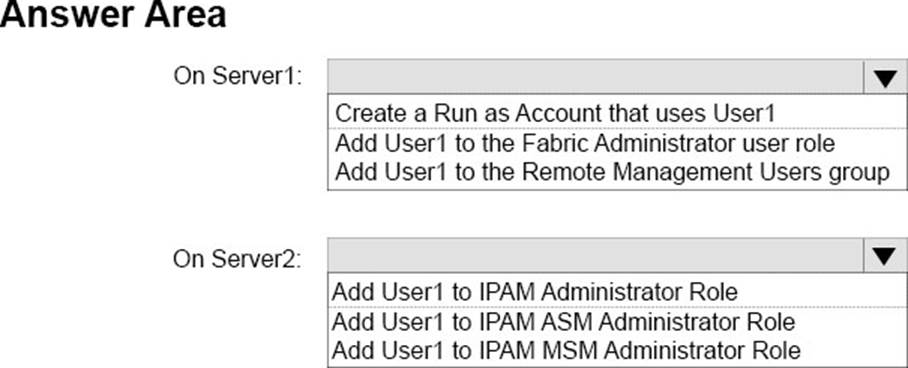
DRAG DROP
Your network contains an Active Directory domain named contoso.com. The domain contains a server named Server1 that runs Windows Server 2016. You install IP Address Management (IPAM) on Server1.
You need to manually start discovery of the servers that IPAM can manage in contoso.com.
Which three cmdlets should you run in sequence? To answer, move the appropriate cmdlets from the list of cmdlets to the answer area and arrange them in the correct order.
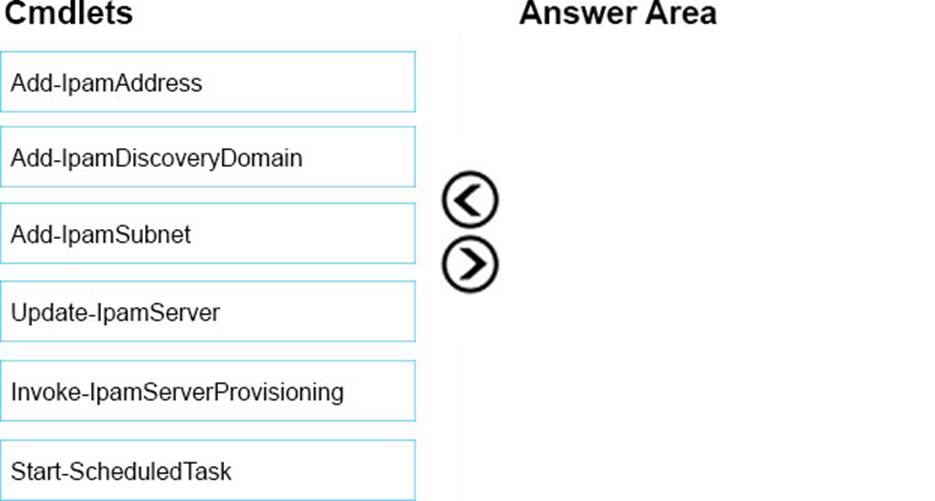
HOTSPOT
You network contains an Active Directory named contoso.com. The domain contains two servers named Server1 and Server2 that run Windows Server 2016.
Server1 has IP Address Management (IPAM) installed. Server2 has the DHCP Server role installed. The IPAM server retrieves data from Server2.
The domain has two users named User1 and User2 and a group named Group1. User1 is the only member of Group1.
Server1 has one IPAM access policy.
You edit the access policy as shown in the Policy exhibit. (Click the Exhibit button.)
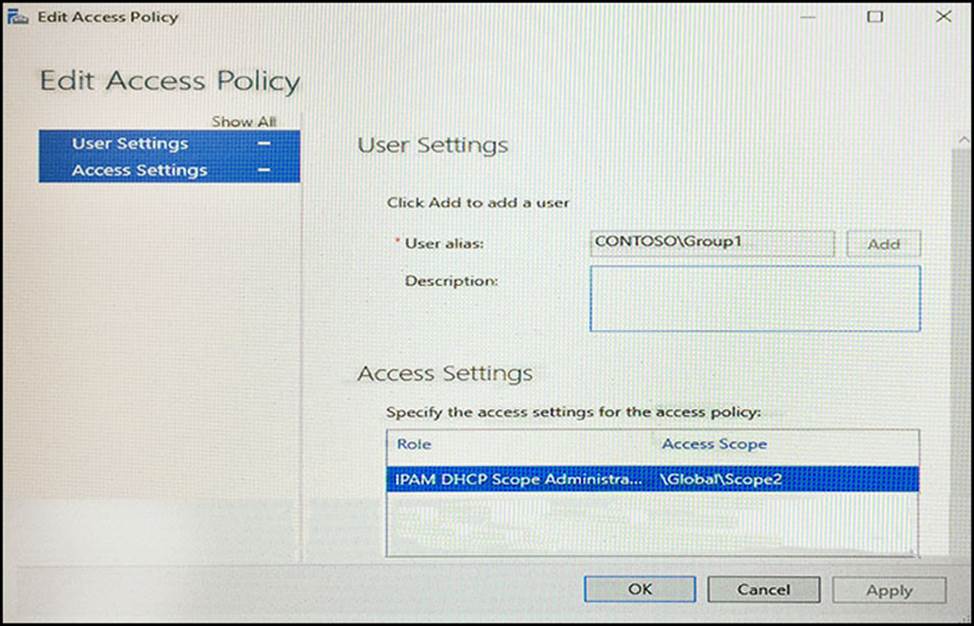
The DHCP scopes are configured as shown in the Scopes Exhibit. (Click the Exhibit button.)
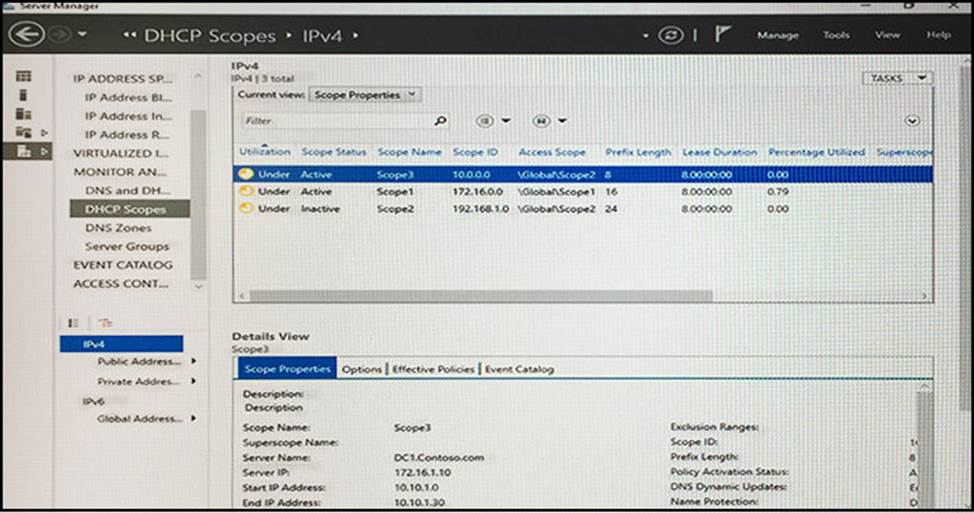
For each of the following statements, select Yes if the statement is true. Otherwise, select No.

HOTSPOT
Your network contains an Active Directory domain named contoso.com. The domain contains three servers named Server1, Server2, and Server3 that run Windows Server 2016.
Server1 has IP Address Management (IPAM) installed. Server2 and Server3 have the DHCP Server role installed and have several DHCP scopes configured. The IPAM server retrieves data from Server2 and Server3.
A domain user named User1 is a member of the groups shown in the following table.

On Server1, you create a security policy for User1. The policy grants the IPAM DHCP Scope Administrator Role with the Global access scope to the user.
Which actions can User1 perform? To answer, select the appropriate options in the answer area.
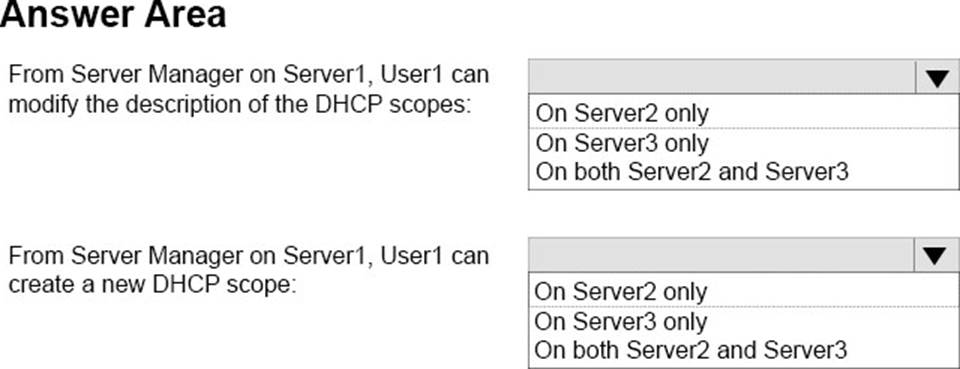
HOTSPOT
Your network contains an Active Directory domain named contoso.com. The domain contains four servers named Server1, Server2, Server3, and Server4 than run Windows Server 2016.
Server1 has IP Address Management (IPAM) installed. Server2, Server3, and Server4 have the DHCP Server role installed. IPAM manages Server2, Server3, and Server4.
A domain user named User1 is a member of the groups shown in the following table.

Which actions can User1 perform? To answer, select the appropriate options in the answer area.
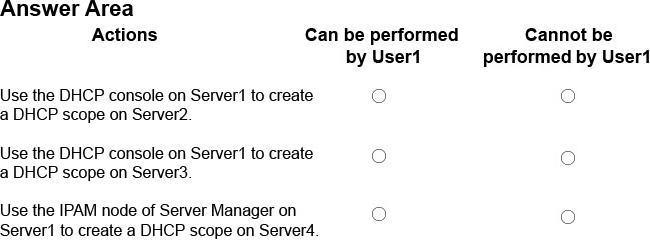
You have a server named Server1 that runs Windows Server 2016. Server1 is a Hyper-V host that hosts a virtual machine named VM1.
Server1 has three network adapter cards that are connected to virtual switches named vSwitch1, vSwitch2 and vSwitch3.
You configure NIC Teaming on VM1 as shown in the exhibit. (Click the Exhibit button.)
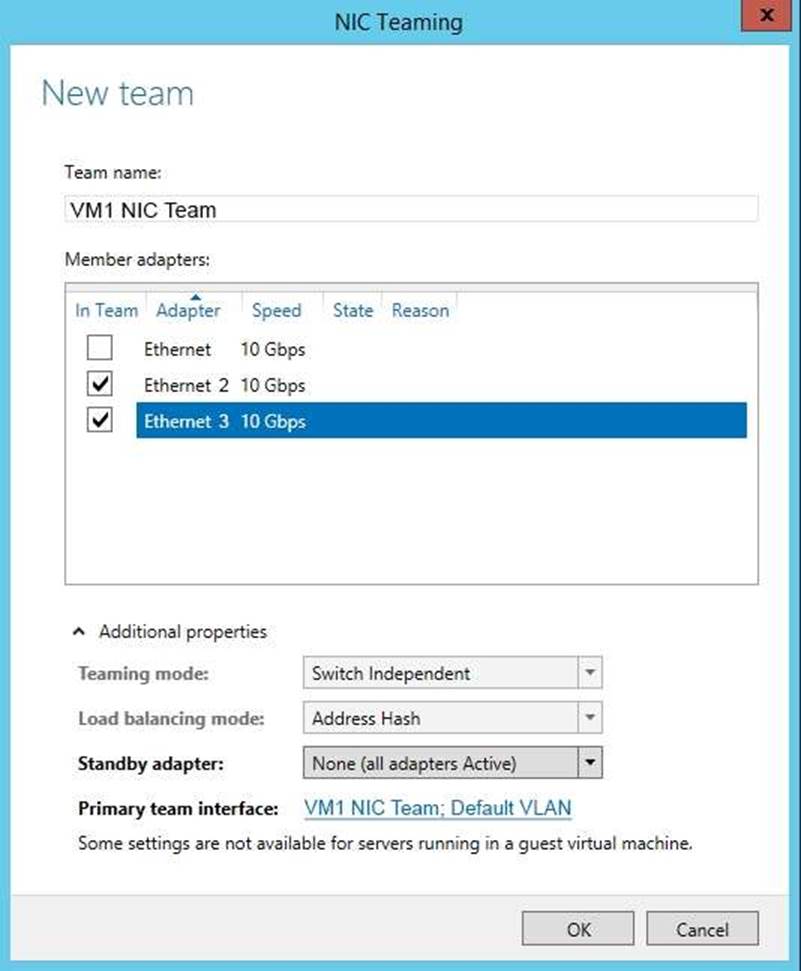
You need to ensure that VM1 will retain access to the network if a physical network adapter card fails on Server1.
What should you do?
- A . From Windows PowerShell on VM1, run the Set-VmNetworkAdapterTeamMapping cmdlet.
- B . From Windows PowerShell on Server1, run Set-VmNetworkAdapter cmdlet.
- C . From Windows PowerShell on Server1, run the Set-VmNetworkAdapterFailoverConfiguration cmdlet.
- D . From the properties of the NIC team on VM1, add the adapter named Ethernet to the NIC team.
You have an application named App1. App1 is distributed to multiple Hyper-V virtual machines in a multitenant environment.
You need to ensure that the traffic is distributed evenly among the virtual machines that host App1.
What should you include in the environment?
- A . Network Controller and Windows Server Network Load Balancing (NLB) nodes
- B . an RAS Gateway and Windows Server Software Load Balancing (SLB) nodes
- C . an RAS Gateway and Windows Server Network Load Balancing (NLB) nodes
- D . Network Controller and Windows Server Software Load Balancing (SLB) nodes
HOTSPOT
You have a server named Server1 that runs Windows Server 2016. Server1 is a Hyper-V host.
You have two network adapter cards on Server1 that are Remote Direct Memory Access (RDMA)capable. You need to aggregate the bandwidth of the network adapter cards for a virtual machine on
Server1. The solution must ensure that the virtual machine can use the RDMA capabilities of the network adapter cards.
Which command should you run first? To answer, select the appropriate options in the answer area.

You have an Active Directory domain that contains several Hyper-V hosts that run Windows Server 2016.
You plan to deploy network virtualization and to centrally manage Datacenter Firewall policies.
Which component must you install for the planned deployment?
- A . the Data Center Bridging feature
- B . the Network Controller server role
- C . the Routing role service
- D . the Canary Network Diagnostics feature
Latest 70-741 Dumps Valid Version with 259 Q&As
Latest And Valid Q&A | Instant Download | Once Fail, Full Refund

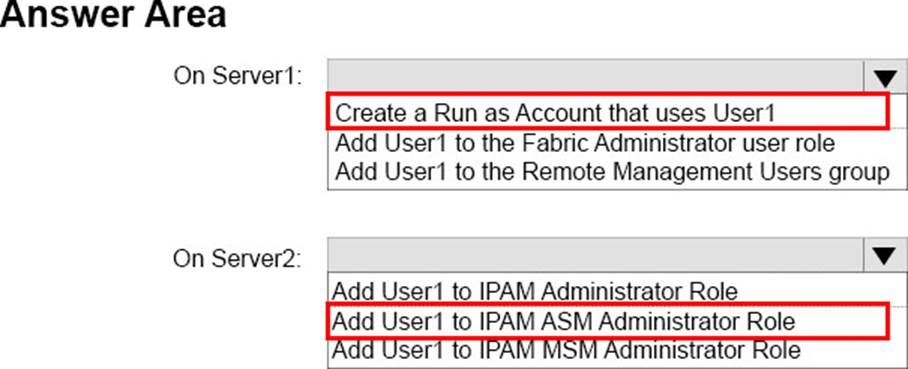
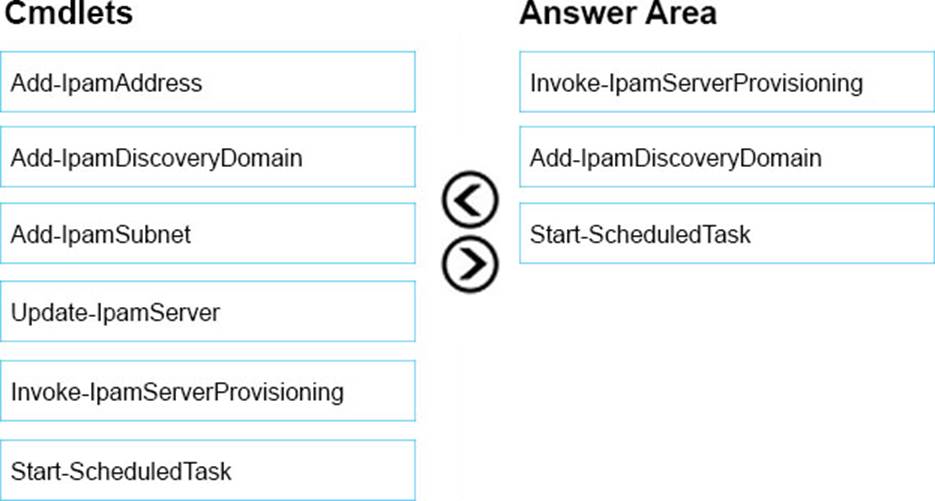
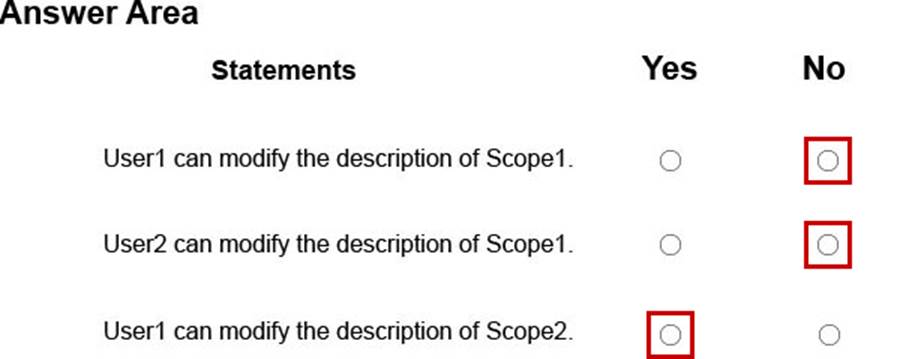
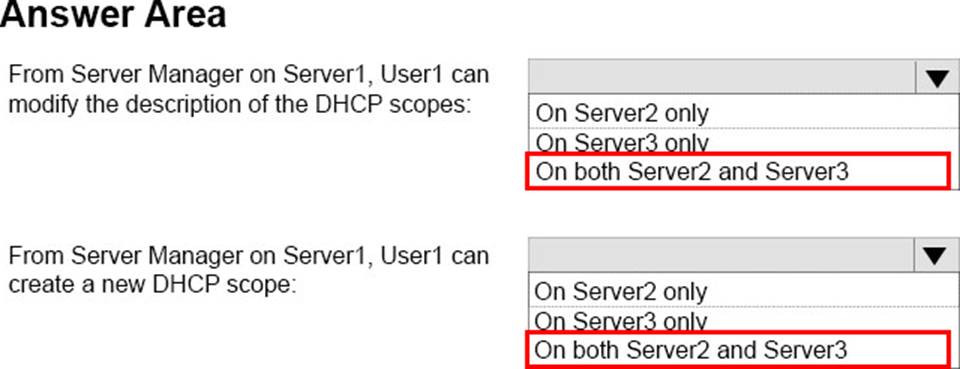
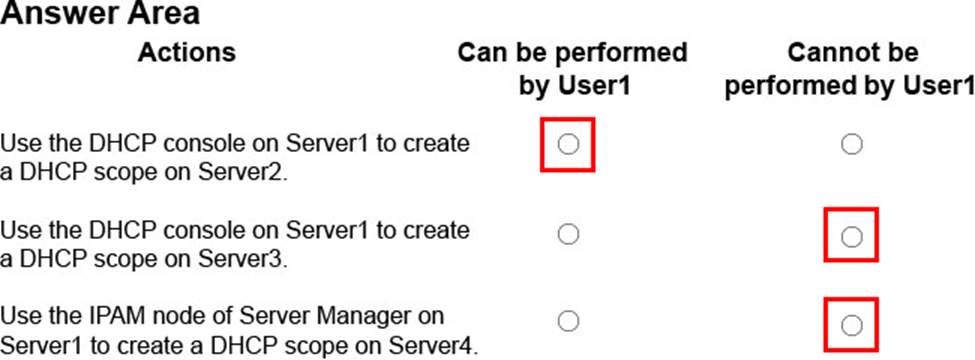


Thanks
thx